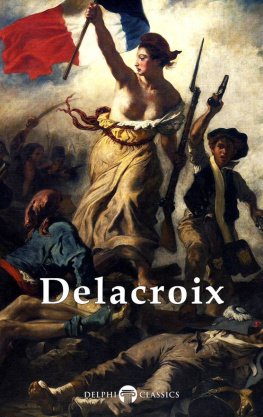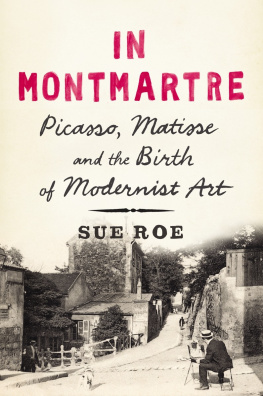 Still Life with Plaster Cupid
Still Life with Plaster Cupid, c.1894. This striking composition dates from Czannes mature period when he was exploring colour, depth and form. Its juxtaposition of contrasting objects and its use of bold framing and shifting viewpoints are all typical of Czannes later work.
Introduction
Paul Czanne (18391906) is one of the outstanding artists of the modern age. In the words of Pablo Picasso, he was quite simply the father of us all, the artist whose work changed the course of modern art. He has been hailed as a leading Post-Impressionist and a vital link between the Impressionist and Cubist movements. In fact, his painting defies all labels. Throughout his life, Czanne worked tirelessly to create a body of work that reflected his very personal response to the world around him.
Unlike many of his artist contemporaries, Czanne had a largely uneventful life. After a boyhood spent in Aix-en-Provence, he moved to Paris in his early twenties, where he met a group of young artists who would later become known as the Impressionists. Among them was Camille Pissarro, with whom he formed a close friendship; the two years he spent working with Pissarro proved to be a crucial time in his artistic development. After this period he retreated to Provence, where he spent most of his time painting in solitude. Even though he had a wife and son, he preferred to live apart from them, filling his life with painting.
Czanne painted with oils and watercolours and produced thousands of drawings. He was equally accomplished at landscape painting, portrait painting and still lifes, and within these genres he concentrated on a limited number of subjects. As a portrait painter, he turned to the same small cast of people many times. His wife, Hortense, and son, Paul, were frequent models, and he produced masterful studies of local Provenal characters. For his still lifes, he painted the same objects repeatedly, each time trying out different combinations. As a landscape painter, he kept returning to the same scenes, most of them within a few miles of his childhood home.
Czannes art evolved throughout his lifetime, but it is possible to identify four distinct phases in his artistic journey. As a young man, he produced work that was dark, dramatic and confrontational. In his early thirties, he experienced an artistic breakthrough when Pissarro encouraged him to eradicate dark colours and strong outlines from his palette and he adopted a lighter, brighter style, using a technique of applying small patches of colour to the canvas. This change was followed by a long period of exploration, in which he developed a method of using brushstrokes that aimed to reproduce the underlying structure of what he saw. Finally, in the last few years of his life, he refined his painting technique, creating a series of landscapes featuring Mont Sainte-Victoire as well as working on his large-scale canvases of The Bathers.
This book is part of a series introducing great artists who changed the course of art. It charts Czannes journey as an artist, exploring the places where he lived and worked, his mainly solitary personal life, and the artistic influences that helped to shape his remarkable vision of the world.

Mont Sainte-Victoire, c.19026. Czannes birthplace of Aix-en-Provence was to become one of his favourite subjects. This study, painted near the end of his life, shows the town nestling under the peak of Mont Sainte-Victoire.
The picturesque town of Aix-en-Provence lies at the heart of Paul Czannes life and art. It was there he was born in 1839 and there he died, 67 years later, having devoted much of his life to painting the surrounding landscape. The countryside of Provence its woods, fields and rivers, its rocky outcrops and isolated farms was a source of inspiration to the young Czanne, but his childhood was not a time of perfect happiness. While his mother was loving and supportive, his father, Louis-Auguste Czanne, was a man of driving ambition who had a troubled relationship with his sensitive son.
Family and early childhood
Czannes parents both came from humble origins. His father, Louis-Auguste, was the son of a tailor in a small village outside Marseille. As a young man he had moved first to Aix to work for a wool merchant, and then to Paris where he trained as a hat-maker. Louis-Auguste returned to Aix at the age of 24 and very soon established his own business with two partners. The firm, which sold and exported felt hats, was a great success and by the time of Czannes birth his father had become a wealthy and respected member of the bourgeoisie of Aix.
Louis-Auguste met his future wife, Anne-Elisabeth-Honorine Aubert, while she was working in his hat-making company. The daughter of a woodturner, she was 24 at the time of their first meeting, while Louis-Auguste was approaching 40. Soon the couple were living together and it wasnt long before Elisabeth became pregnant. Paul was born in 1839, followed by a sister, Marie, in 1841. The couple did not marry until Paul was five years old, but this was not unusual in French rural society. A third child, Rose, was born in 1854; however, the 15-year gap between Paul and his younger sister meant that they never had a close relationship.
At the age of five Paul began school, and Marie soon followed. The children attended a small primary school before moving on to the cole Saint-Joseph, where Paul stayed for three years. In later life, Marie wrote a letter to Czannes son, recalling those early schooldays. She told him that her big brother took much trouble to look after her, remaining gentle towards her even when she provoked him, and she described him as a quiet and docile student [who] worked hard [and] had a good mind, but did not manifest any remarkable qualities. It was not until he moved to the Collge Bourbon that Paul began to come into his own.

The Painters Father, Louis-Auguste Czanne, c.1865. Louis-Auguste had a forceful personality and dominated his sons life for many years. A determined individualist, he liked to wear examples of the headwear made by his company.

Girl at the Piano Overture to Tannhauser, c.1868. Very few images of Czannes childhood survive, but this picture, painted in his early, heavy style, shows his mother and sister Marie in the family home at Aix.
School and friendship
In 1852, the 13-year-old Czanne joined the Collge Bourbon as a day boarder, leaving home at 7am and returning only to sleep. In his six years at the Collge, he gained a solid education and some lifelong friends. In particular, his friendship with two other boys was so close that they became known as the Inseparables. Czannes young companions were Baptistin Baille, who came from a wealthy family in Aix, and a lively little Parisian called mile Zola. In later life, Baille was a professor of optics and acoustics in Paris, while Zola became one of Frances leading novelists and playwrights.
At school, the three Inseparables worked hard at their studies, but also enjoyed some harmless fun, devising playful nicknames for their teachers and playing practical jokes. According to Zolas fictionalized account of his schooldays, the friends smoked dried chestnut leaves in homemade pipes while the young Czanne experimented with setting fire to insects. After school, the trio often gathered in an upstairs room of Bailles house, where they brewed up strange potions and composed plays in rhyming verse that they directed and acted in themselves.
Next page














 Still Life with Plaster Cupid, c.1894. This striking composition dates from Czannes mature period when he was exploring colour, depth and form. Its juxtaposition of contrasting objects and its use of bold framing and shifting viewpoints are all typical of Czannes later work.
Still Life with Plaster Cupid, c.1894. This striking composition dates from Czannes mature period when he was exploring colour, depth and form. Its juxtaposition of contrasting objects and its use of bold framing and shifting viewpoints are all typical of Czannes later work.  Mont Sainte-Victoire, c.19026. Czannes birthplace of Aix-en-Provence was to become one of his favourite subjects. This study, painted near the end of his life, shows the town nestling under the peak of Mont Sainte-Victoire.
Mont Sainte-Victoire, c.19026. Czannes birthplace of Aix-en-Provence was to become one of his favourite subjects. This study, painted near the end of his life, shows the town nestling under the peak of Mont Sainte-Victoire.  The Painters Father, Louis-Auguste Czanne, c.1865. Louis-Auguste had a forceful personality and dominated his sons life for many years. A determined individualist, he liked to wear examples of the headwear made by his company.
The Painters Father, Louis-Auguste Czanne, c.1865. Louis-Auguste had a forceful personality and dominated his sons life for many years. A determined individualist, he liked to wear examples of the headwear made by his company. Girl at the Piano Overture to Tannhauser, c.1868. Very few images of Czannes childhood survive, but this picture, painted in his early, heavy style, shows his mother and sister Marie in the family home at Aix.
Girl at the Piano Overture to Tannhauser, c.1868. Very few images of Czannes childhood survive, but this picture, painted in his early, heavy style, shows his mother and sister Marie in the family home at Aix.